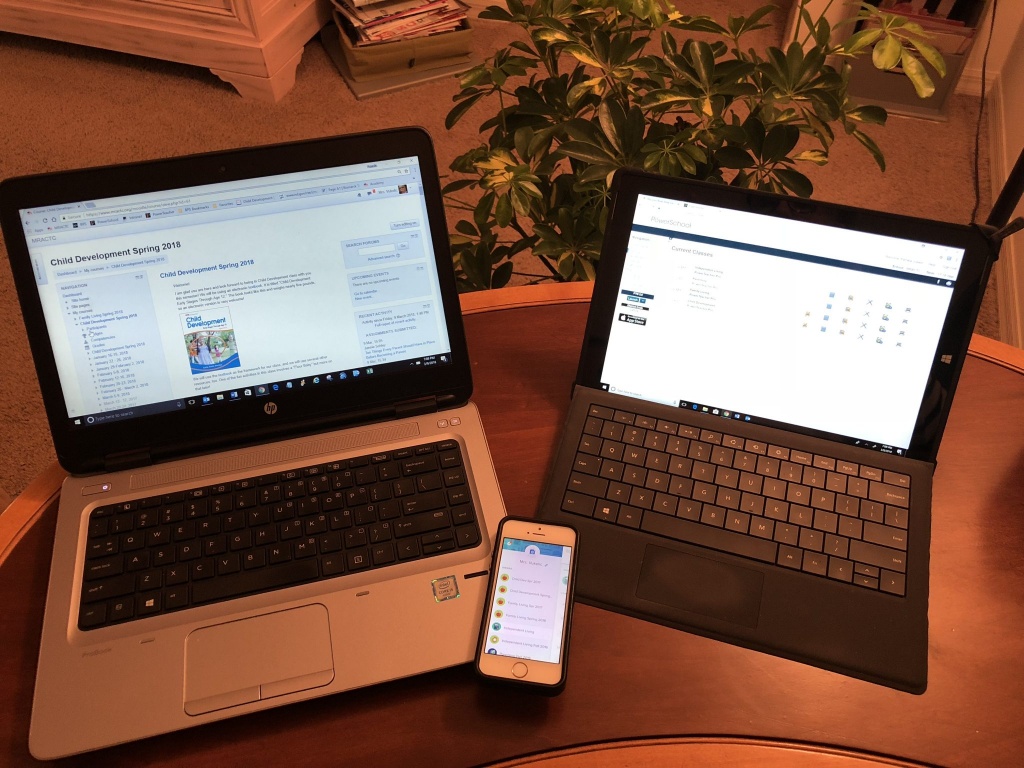 by Pam Vukelic | Submitted Photos
by Pam Vukelic | Submitted Photos
For those of us who have been around for a while, the technological changes that have occurred in our world are mind-boggling. I remember when my father was approaching the end of his life, he was in a hospital bed, and he had not met Mollie. Mollie lived in Kentucky and was engaged to be married to our son, Reed. We arranged for Mollie and Grandpa to chat via laptop and thus they met. After we logged off, Grandpa said, “Can we rewind and replay that?” He must have been so amazed at our evolution from telephone party lines to Skype.
In my own experience, I’m amazed at the opportunity I’ve had to evolve from being a classroom teacher to a virtual instructor. Courses I taught in the classroom, such as child development, parenting, independent living, and family living, I now teach through the Missouri River Area Career and Technical Center (MRACTC) to students in member schools across North Dakota.
The mission of the MRACTC is “to provide career and technical educational opportunities to our member schools’ students, in the most economical fashion, where every student has the same educational opportunity regardless of the size or location of the school.” Courses in agriculture, aviation, electronics, information tech, health science careers, family and consumer sciences, graphic arts, and STEM (Science, Technology, Engineering, and Math) are offered.
My students are high school kids. A typical class consists of 20-30 students from 10-12 schools. We work together through a learning platform called Moodle. These are strictly online classes. We do not meet at a set time of day, nor do we see each other through a television-like link.
The students can log on any time of the day or night to find information I post in one-week blocks. They will find assignments, announcements, quizzes, and forums. Their textbooks are electronic versions of regular textbooks. Augmenting content with current and relevant material is just an easy link away.
One important component of each semester class, and the only element that is not online, is our “Day in Bismarck,” when the students all come together to meet with me and their classmates at the Bismarck Public Schools Career Academy. This gives us the opportunity to see each other face-to-face. The students meet all of their classmates and we get to put names to faces. The agenda for the day, tailored to each specific course, might include practicing with the RealCare computerized babies (each student takes one for a weekend); learning activities that are best done in a hands-on group setting; speakers who provide personal, meaningful content; and a little bit of fun.
I have found the students really appreciate the opportunity to enroll in these online classes. They are afforded tremendous freedom and flexibility to progress at their own speed. The number of elective courses from which they can choose is huge compared to what their local—often small—schools can offer. What a student learns through taking an online class far exceeds course content. These students need to be disciplined and show initiative. The students learn to problem-solve regarding technological issues. My student might be the only student in her school in this class. She might have an access issue or a submission problem. Then invariably, in a day or so, the student gets back to me saying, “I figured it out.” This is music to my ears and builds confidence in my kids.
Online teaching offers me freedom and flexibility, too. There was a day not long ago when I messaged my students to say I was leaving Anchorage, Alaska that morning for Florida, so my ability to communicate with them would be limited. I was able to catch up with their messages in Seattle, Washington and Denver, Colorado, and then log-in again that night when I got to Florida. What classroom teacher wouldn’t welcome that freedom? The reality is my students would not have even known I wasn’t in Bismarck had I not told them.
There are responsibilities classroom teachers have, but don’t enjoy very much. Examples are recording tardies and absences, monitoring cell phone usage, guiding students through yet another necessary (and sometimes frightening) drill, or smoothing out conflicts between a couple of students. An online teacher does not deal with any of these things.
As I visit with people from all over the country and tell them about my work, the responses I get are, “That is fascinating!” or, “Really, for high school students?” or, “That sounds so important—I wish every student could have that opportunity!” I wish every teacher could have this opportunity, too.
[supsystic-gallery id=113] Even though Pam rarely is face-to-face with her students, she relishes the opportunity to get to know them through various messaging techniques.
Even though Pam rarely is face-to-face with her students, she relishes the opportunity to get to know them through various messaging techniques.
Photography: Realityworks, Inc.
